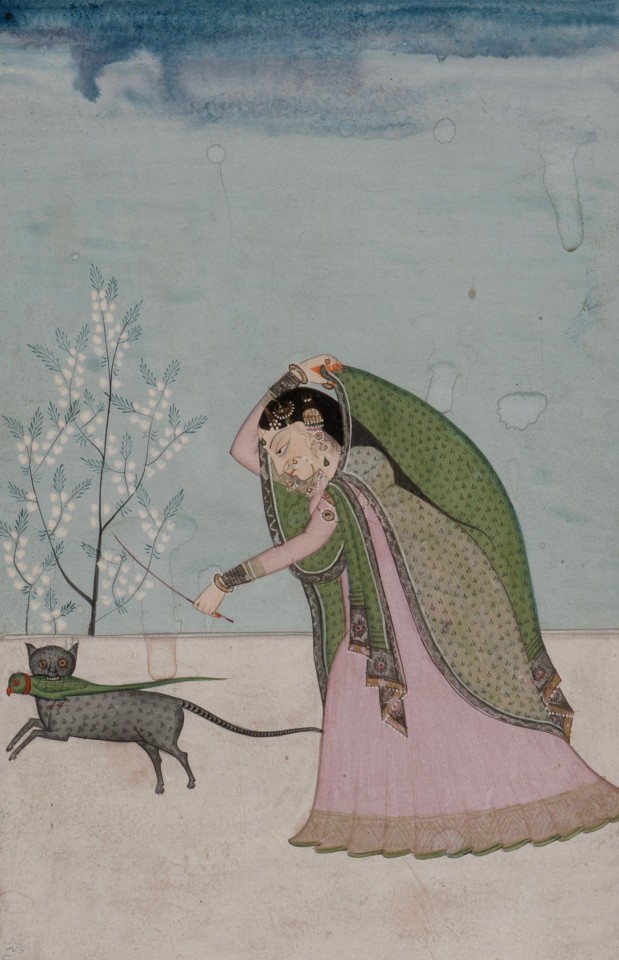Chamba, India
Tempera on paper
Circa 1815-1820
In this unusual composition a princess in a pink dress and green shawl chases a cat across a terrace, which is making off with her pet parrot in its mouth. This scene remains popular in various centres of Indian painting during the mid-18thcentury. It makes an early appearance in a 1740 Mughal painting which now forms part of the Victoria and Albert Museum collection, (V&A, IS.171-1955), and the subject-matter clearly soon caught the attention of Rajput patrons and painters, and was reinterpreted by artists in Bundi and Bikaner. By 1770, painters of Kangra had already created their own versions of this bizarre and distinctive scene (W.G. Archer, Indian Painting from the Punjab Hills: A Survey and History of Pahari Miniature Painting, p. 411, cat. no. 2). The current painting is another version of the same episode made by a Kangra painter possibly for the Chamba court. The subject was a popular one in the Pahari courts, and a similar scene from Kangra is published in Archer, Indian Paintings from the Punjab Hills, Vol. II, p. 224. In refernce to these works, Archer states that the parrot symbolises the lady’s lover and the cat her rival.
On a warm and lazy afternoon, things have suddenly taken a dramatic turn when a cat has decided to make off with the heroine’s pet parrot. The Nayika is chasing the cat with a stick in her hand as she struggles to keep her odhni from slipping off her head. The calmness on the face of the heroine suggests that the episode is a routine, rather an expected one, and she has become accustomed to it. Other interpretations of the scene usually show a pet cat, suggested by a collar around its neck, a characteristic which is not certain in this illustration. The composition is simple in nature and the artist has employed a palette of warm colours. Instead of a more traditional architectural setting, the artist has used a blue backdrop for open sky and a flowering tree standing in solitude, to contrast with the unfolding drama.
